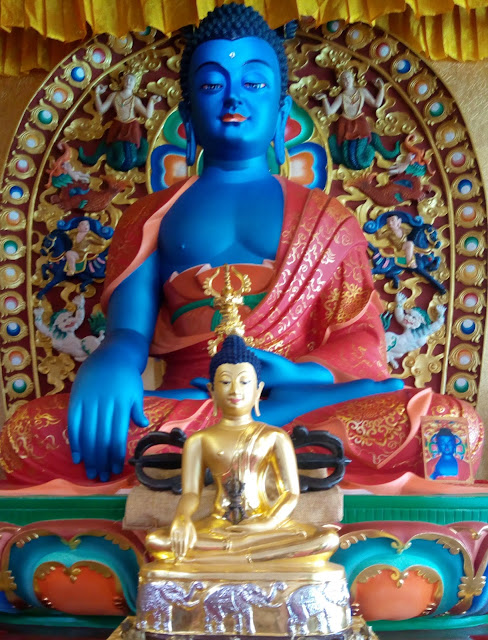What Changed Tibet Today
A journey to a mysterious Himalaya snow land and its unique Vajrayana Buddhism and the threatening culture. Tibetan culture and identity is inseparably linked to Tibetan Buddhism.
October 1950 nearly 70 years after the invasion of China, the Chinese government has changed the iron hand, at least in public, with the silk gloves of the economical modernization. The carrot has replaced the bat, as the development could end with the Tibetans accepting the facts valid since 1951.
The autonomous province, with estimated 3-4 million Tibetans and about four times bigger than France, has changed in the last 15 years. The mighty Potala palace, winter residence of His Holiness The 14th Dalai Lama since the 17th century, has remained approximately unchanged. But Lhasa has changed.
These days, large parts of the city of Lhasa has changed rapidly and increasingly like any modern Chinese city, with hundreds of old buildings and villages knocked down to make way for new shopping malls and apartments for immigrants.
Nowadays, the Tibetans have to adjust and adapt to a new flood of arrivals of domestic and foreign tourists, after China opened a new train route across the high altitude Tibetan Plateau, from Xining to Lhasa in 2006.
Tibet today
Tourists flying high to ‘the roof of the world'
The Tibet region’s airports received 3.15m visitors last year and the number of tourists has grown by as much as 30 per cent each year
Tibet is rich in tradition and Tibetans lifestyles that have changed over the generations. It is also a modern country with many urban Tibetans living busy city lives. Communications are very important for Tibetans and the use of mobile phones and the internet is extensive, including in some of the most remote parts of Tibet.
Lhasa, the capital of southwest China’s Tibet Autonomous Region, is one of 24 famous historical and cultural cities declared by the China State Council. In recent years, Tibet's tourism has expanded rapidly, especially after the completion of Qingzang Railway.
Tourism is the new engine power tool for development in Tibet. Tibet received more than 20 million tourists for the first time in 2015, representing 190-per cent growth from five years ago. Tourism revenue reached 28.19 billion yuan (£3.42 billion) in the same year, equal to 27.5 percent of Tibet's GDP.
By 2020, estimated there will be 240 million tourists coming to Lhasa, generating 29.8 billion yuan in tourism revenue. Besides, Lhasa will become the only one International tourist, cultural city of Qinghai-Tibet Plateau.
Statistics from Lhasa's tourism Bureau
- In 2006 -2007 Tibet received 7 million tourists, including 1 million foreigners. Tibet has generated a tourism income of 2.29 billion Chinese yuan.
- In 2010, Tibet received 6.85 million tourists from home and abroad, generating revenues of 7.14 billion yuan, 14 percent of its total GDP.
- In 2011 -2012 Tibet received 19 million domestic and foreign tourists.
- In 2015 Tibet received more than 20 million domestic and foreign tourists.
- In first half of 2016 Tibet received a record of 6.8 million tourists domestic and foreign tourists. Tourism revenue during the period increased by 32.1 percent year on year to 7 billion yuan ($1.05 billion), according to a statement issued by the regional tourism development commission.
By 2020, there will be 240 million tourists coming to Lhasa, generating 29.8 billion yuan in tourism revenue. Besides, Lhasa will become the only one International tourist, cultural city of Qinghai-Tibet Plateau.
China's One Belt One Road Initiative (BRI)
Navigating a world of new opportunities through China's One Belt One Road Initiative (BRI)
Bridging the 'infrastructure gap' in Asia and beyond. The Belt and Road Initiative is expected to bridge the infrastructure gap and thus accelerate and infrastructure-driven economic growth across the Asia Pacific area and Central and Eastern Europe.
What is Tibet and China’s 'one belt and one road initiative?
In more recent times, China’s “One Belt, One Road” (OBOR) policy – China plan to expand the reach of Chinese trade routes to Europe through a land route in Central Asia and a sea route through the Indian Ocean and around the horn of Africa – has taken center stage as a cornerstone of modern Chinese foreign policy. Access to Pakistan and Central Asia are crucial to ensure the success of these trade routes, which incidentally must start or pass through Tibet.
China’s railway expansion in Tibet. China announced plans to extend a railway line linking Tibet with the rest of the country to the borders of India, Nepal and Bhutan by 2020. China opened its 1,142 km railway line from Golmud in its Qinghai province to Tibet’s capital Lhasa in 2006.
The 253 km Lhasa-Shigatse link, which includes 13 stations with altitudes ranging from 3,600 to 4,000 metres, is the largest investment project in the Tibet Autonomous Region in the 12th Five-Year Plan.
The Economist in June this year, published a report about over 7.5 million passengers rode the railway from Golmud to Lhasa in 2013 alone — more than the entire population of Tibet itself. China will spend about $17.6 billion for a second rail link to northwestern Xinjiang, Uighur, its major coal production region near Tibet.






























